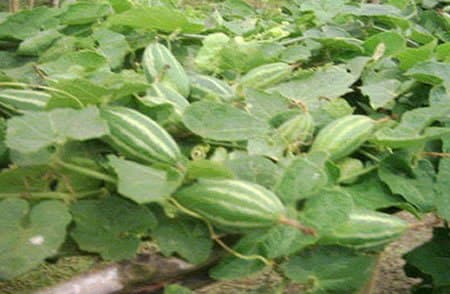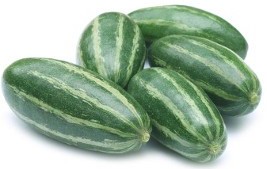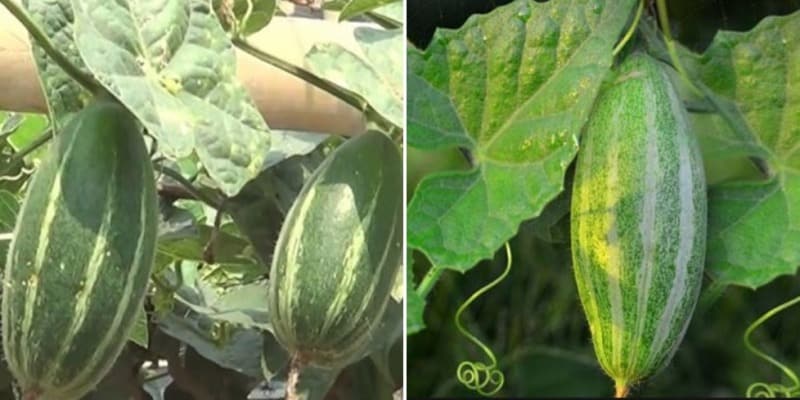A step by step guide for Pointed Gourd Cultivation Practices:
Today, we discuss the pointed gourd cultivation/Parwal farming methods, pointed gourd plant care, harvesting procedure of pointed gourd.

Introduction of Pointed Gourd:
The pointed gourd is a popular tropical vegetable grown throughout India. This vegetable is native to the Indian subcontinent. This vegetable is also known as a “Parwal” or “Palwal” or “Parmal” or “Pattol” in different parts of India and Bangladesh. This vegetable can be cooked alone or with combinations of other vegetables or meats. The pointed gourd is a good source of vitamins and other medicinal values. Basically, pointed gourd plant is a perennial and grows like a vine (creeper). This plant belongs to the family of “Cucurbitaceae”. Do not confuse this vegetable with Ivy Gourd/Tindora. This vegetable looks similar to Ivy gourd / Tindora but little bigger in size.
Health Benefits of Pointed Gourd:
Below are some of the health benefits and medicinal values of the pointed gourd.
- The pointed gourd is a good source of vitamins.
- Pointed gourd helps in improving digestion.
- Pointed gourd controls blood sugar levels.
- Pointed gourd controls the cholesterol level and keeps the heart-healthy.
- Pointed gourd helps in treating constipation.
- Pointed gourd helps in weight loss program.
- The pointed gourd is a blood purifier.
- Pointed gourd helps in reducing flu symptoms.
- Pointed gourd fights with aging.

Major Production States of Pointed Gourd in India:
Bihar, Chhattisgarh, Odisha, Tamil Nadu, and Uttar Pradesh.
Pointed Gourd Local Names in India:
Pointed gourd (English), Parwal / Parval (Hindi), Paraval (Marathi and Gujarathi), Patol (Bengali and Assamese),Kommu Potla / Chedu Potla (Telugu), Kambupudalai (Tamil), Kaadu Padaval, Kadu padavala kayi (Kannada), and Patolam (Malayalam).
Hybrid Varieties of Pointed Gourd in India:
Swarna Rekha (Recommended for cultivation in Jharkhand, Bihar, Orissa, Eastern UP and West Bengal), Rajendra Parwal-1,Rajendra Parwal-2,Swarna Alaukik.
Climate Required for Pointed Gourd Production:

This perennial plant grows best in warm to hot humid climates and does not tolerate frost & extreme cold conditions. Dry tropical weather after monsoon is preferred. The pointer gourd plants require temperature is 30°C to 35°C for optimum growth and yield.
Soil Requirement for Growing Pointed Gourd:
Well-drained sandy loam to clay soil is suitable for cultivation of pointed gourd. The optimum soil PH range of 6.0 to 6.5 is best for its cultivation. This crop does not grow well in heavy soils but in alluvial light soils.
Propagation of Pointed Gourd:
The pointed gourd is usually propagated through either vine cuttings or root suckers. Seed propagation is not feasible as the germination is very poor in this process. Apart from this, the inability of finding gender (male or female) of the flower caused the low yield.
Land Preparation in Pointed Gourd Plantation:
Land should be plowed 2 to 3 times until the soil reaches a fine tilth stage. Apply well rotten farmyard manure (F.M.Y) of 20 to 25 tonnes/ha in the soil to enhance the soil fertility. Hence the yield of vegetables would be high.
Male Female Ratio in Pointed Gourd Cultivation:
Point gourd is a dioecious plant so the only one sex is determined in a single plant. If all plants are in the field to be found as males, then the total yield would be zero. Hence, maintaining the male-female ratio is very important in its cultivation. To get maximum yield in the point gourd cultivation, a female: male ratio of 9:1 is should be maintained.
The spacing of Pointed Gourd Plants
In pointed gourd Cultivation, a distance of 1.5 – 2.0 meters × 1.5–2.0 meters should be kept based on the training method of vines.
Irrigation requirement for Pointed Gourd Crop:
First irrigation should be given immediately after planting. Subsequent irrigations should be carried @ 3 to 4 days interval. Again watering the crop depends on the soil type and moisture condition of the soil. To get a good quality of vegetables, irrigate the crop at alternate day’s interval at the time of flowering and fruiting. Irrigations are not required in the rainy season. In case of heavy rains or flooding, make sure to avoid water logging by providing proper drainage in the field.
Weed Control and Intercultural Operations of Pointed Gourd:
Weed control and hoeing should be carried during the initial stage of crop growth. Weeds can be removed either manually or mechanically. To conserve moisture and facilitate aeration around the root area, hoeing should be done. In flatbed cultivation of pointed gourd, due to the trailing habit & long crop duration, weeding operation will be difficult during rainy season and summer. On post-shoot emergence, spray herbicides like Gramaxone (1.0% a.i.) per hectare along with mulching to control the weeds and to ensure higher yield.
Training of Pointed Gourd Vines:
In pointed gourd training, for effective pollination & plant growth that leads to early flowering and higher yields (compared to flatbed systems), vines should be trained on trellis systems ( intersecting pieces of wood or bamboo). The trellis is generally 2 meter in height. Usually, vines are trained on the vertical trellis by tying with wires. Aerial supports include bowers (horizontal netted wire support which is 2.5 m above the ground level). In the bower type, the structure made with wood or concrete pillars should be erected first in the field.
Manures and Fertilizers for Pointed Gourd Plants:
Apply well rotten farmyard manure of 20 to 25 tonnes /ha at the time of land preparation. Fertilizers of 60 to 80 kg of nitrogen (N) (top dressing), 40 kg of Phosphorus (P2O5), & 40 to 50 kg of Potassium per hectare should be applied.
Pests and Diseases of Pointed Gourd Plants:
- Main pests found in this crop are Fruit Flies, Epilachna Beetle, & Red Pumpkin Beetle.
- Fruit Rot, Root-knot Nematode, Downy Mildew, and Mosaic are the main diseases found in Parwal cultivation.
For control measures of these pests and diseases, contact your local agricultural department.
Harvesting Procedure of Pointed Gourd:
Generally, pointed gourd vines start fruiting in about 120 to 140 after transplanting typically in Feb month & continues till Sept. These vegetables can be harvested about 15–18 days after pollination before reaching full maturity. Weekly harvesting is preferred in this crop.
The yield of Pointed Gourd:
Generally, yield depends on the crop management, a variety cultivated and plant population. In the Parwal cultivation, an average yield of 15 to 20 tonnes per hectare can be achieved.
Marketing of Pointed Gourd:
The local market is the place where these vegetables can be transported.
You may be interested in Growing Radish, Planting, Care, Growth Stages.